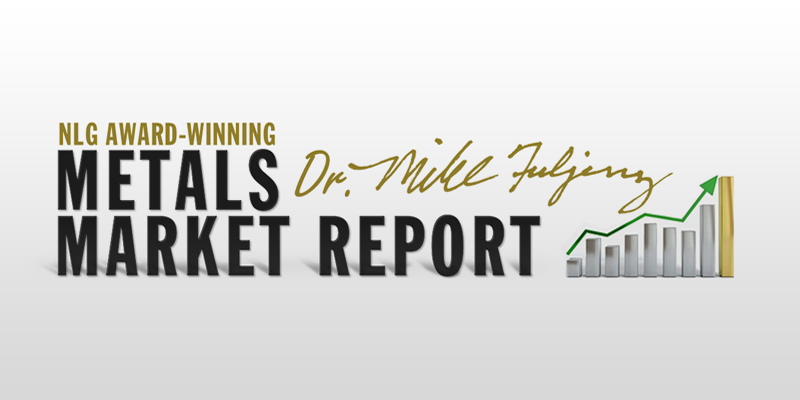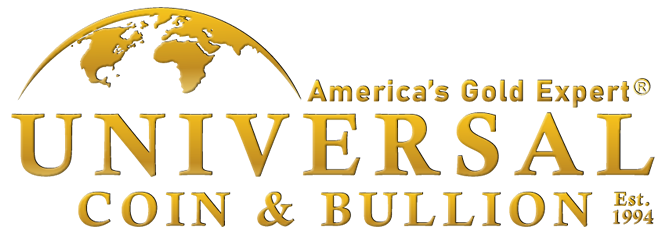
May 2025 – Week 1 Edition
A Look Back At The 2025 NRA Convention
We just returned from a large NRA convention in Atlanta, April 25-27. Attendance was good the first two days but as is often the case, the crowd lessened on Sunday as church and other activities competed for attendance. The level of interest and enthusiasm for our products by the public was palpable, considering the price of gold is up 25% in 2025.
We held our 14th Freedom First Financial Seminar and it was again well received this year. Our moderator Jeff Medley and the panel of experts, including myself, Forest Hamilton, Ryan Hamilton, Nathan Begnaud, John Linscomb and Francis Hooker captivated the crowd for an hour with information and wit. The topics covered included market appreciation for gold and rare gold coins, IRAs, counterfeit deterrence and other topics addressed in the audience Q&A. To watch the seminar, click on the link (click here). You will be glad you did!

I also attended a dinner for select guests of the NRA at the Atlanta Zoo, where we heard from Captain Jeff Struecher of Black Hawk Down fame. His life story of service to our country was harrowing and inspirational. He is a true hero.
On Sunday morning, we sponsored the annual NRA Prayer Breakfast, hosting about a thousand believers. Our very own Forest Hamilton was a main participant and captured the crowd with his life story. The keynote speaker was the famous Christian actor, Kevin Sorbo, who played the role of Hercules in the hugely popular show, Hercules: The Legendary Journeys. He has also acted in and produced a number of Christian films. His take on the state of Hollywood today was enlightening and not unexpected.
All in all, we met old and new friends, whom we look forward to serving for many years.

Gold Has Risen Each Month in 2025 – Stocks Have Fallen Three Months in a Row
Gold is up 25.5% through the end of April – almost as much as its full-year 27.5% gain in 2024 – and gold has risen in each of the four months of the new year. Stocks have a different story, falling each of the last three months, after a small gain in January on the short-lived hope in Trump’s first days.
Gold is a crisis hedge and the disruption that followed many of Trump’s first actions in his first 100 days outweighed the hopes that these actions would have a long-term positive outcome. That’s one reason why gold soared and stocks fell in April – the month when high tariffs were announced on April 2nd, even though a week later, their implementation was delayed for 90 days, many of which are reciprocal. Basically, “what’s good for the goose is good for the gander.”
Silver may have seemed to be disappointing in April compared with gold but that’s only because silver was so erratic in its surges this year. Silver shot up by double digits in both January (+11%) and March (+10%) but then silver took a rest in February (-2.8%) and April (-4.8%). In the end, silver rose by over 12%, which placed it far above most other industrial commodities in the first four months of 2025, since, along with gold, silver is also a precious metal.
Overall, commodities fell by 8.6% in April and 3.8% for the year so far. Oil prices are down by 18% through April 30th, natural gas is down by 22%, iron ore and steel are down 8% to 10%, respectively, and zinc (used to manufacture our one-cent coins) is down 13.2% year-to-date. So, silver’s 12.4% gain so far this year is quite impressive.
Part of the reason why gold gained 25% in 2025 is due to the 10% decline in the U.S. Dollar Index (DXY), as we and Bank of America predicted, from its peak of 110 on January 13 to a reading of 99 since April 11. The falling dollar has not helped those other lagging commodities (oil, zinc, steel and natural gas), since global growth rates have slowed during the international tariff wars in the past few months.
Inflation Has Soared Since the Gold Standard Died
We’re coming up to the 60th anniversary of the month when President Lyndon Johnson took silver out of U.S. coins in June 1965 and it has been over 53 years since we abandoned the gold standard. There was virtually no inflation in America’s first 125 years, except after the Civil War and a few other brief outbreaks, until the birth of the Federal Reserve in 1913. Then came high inflation during and after World War I and World War II but the truly rapid attack of inflation came after President Johnson took the silver out of America’s coins in the Coinage Act of June 3, 1965, and after President Richard Nixon ended the gold standard by stopping any convertibility of the U.S. dollar to gold on August 15, 1971. Since then, prices for almost everything have risen astronomically in America. Over the past 60 years, the Consumer Price Index is up 10-fold, so what cost a dime in 1965 costs a dollar now.
Since August 1971, the CPI is up 678% but many of our major necessities are up much more:
-- In 1970, the per capita spending on health care was only $353 per year but the per capita spending on health care reached $14,570 as of 2023, a 40-fold gain, up 4,027% per person.
-- The national debt in 1971 was only $398 billion. Now, it is $37 trillion, almost 100 times higher, as politicians spend with abandon without the discipline of the gold standard.
-- The median single-family home in 1971 cost $25,200, but the median home sale in 2024 was $416,900, a rise of 1,554% in 53 years, about double the rise in the Consumer Price Index.
-- The average annual tuition in a top-tier private college cost $2,930 in 1971. In 2024, that same college charged $51,690 tuition, or 1,664% more, also more than double the rise in the CPI.
It’s no wonder that gold is up almost 100-fold from its fixed price level of $35 in 1971 to about $3,300 and that means the dollar is down almost 99% in terms of gold. A 1971 dollar is worth barely one cent in terms of gold. The gold standard isn’t perfect but it kept a lid on debts and prices. Now, there appears to be no cure in sight for today’s deficits, so buying gold is our financial insurance.

Gold dipped below $3,300 in after-hours trading on April 30, so our month-ending totals reflect the price at the same hour as the New York market closed for stocks – 4pm EST. Stocks were down early on the negative GDP figures for the first quarter but rallied late to deliver a slim gain for the NASDAQ in April. However, the other two major indexes were down for April, while gold was strong for all four months.



